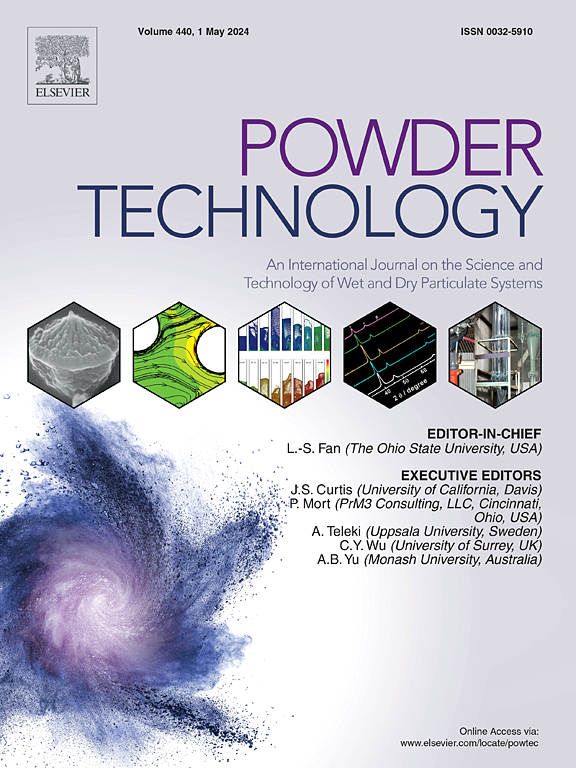Application of liquid metal driven-abrasive flow to material removal for the inner surface of channel
IF 4.5
2区 工程技术
Q2 ENGINEERING, CHEMICAL
引用次数: 0
Abstract
Gallium-based eutectic liquid metal alloys possess unique properties such as deformability, high electrical conductivity, and low vapor pressure. These characteristics have generated significant interest in their application for stretchable electronics and microelectromechanical systems (MEMS). Precise manipulation of liquid metal within electrolytes is essential to meet specific functional requirements. This study investigates the electrostatic manipulation of liquid metal in an alkaline solution with abrasives for material removal from the inner surfaces of flow channels. The polarization of the double layer at the gallium‑indium alloy and electrolyte interface is analyzed, elucidating the principle of electrolyte propulsion via continuous electrowetting. A theoretical model is developed, and two- and three-dimensional transient and steady-state simulations of the liquid metal-driven abrasive flow are conducted. Results demonstrate that this method effectively removes material from the inner walls of straight channels during cyclic motion. Utilizing continuous electrowetting, an experimental apparatus was designed, where gallium‑indium liquid metal propelled silicon carbide abrasives against PMMA channel walls. Experimental results showed effective material removal, consistent with finite element simulations, confirming the feasibility of this innovative approach.

液态金属驱动磨料流在沟道内表面材料去除中的应用
镓基共晶液态金属合金具有可变形性、高导电性和低蒸气压等独特的性能。这些特性对其在可拉伸电子和微机电系统(MEMS)中的应用产生了极大的兴趣。精确操作电解液中的液态金属对于满足特定的功能要求至关重要。本研究探讨了在碱性溶液中用磨料对液态金属进行静电处理以去除流道内表面的物质。分析了镓铟合金与电解液界面处的双层极化,阐明了电解液通过连续电润湿推进的原理。建立了理论模型,对液态金属驱动磨料流动进行了二维和三维瞬态和稳态模拟。结果表明,该方法可以有效地去除循环运动中直流道内壁的物质。利用连续电润湿,设计了一种实验装置,在该装置中,镓铟液态金属推动碳化硅磨料对PMMA通道壁进行摩擦。实验结果表明,材料去除效果良好,与有限元模拟结果一致,证实了该创新方法的可行性。
本文章由计算机程序翻译,如有差异,请以英文原文为准。
求助全文
约1分钟内获得全文
求助全文
来源期刊

Powder Technology
工程技术-工程:化工
CiteScore
9.90
自引率
15.40%
发文量
1047
审稿时长
46 days
期刊介绍:
Powder Technology is an International Journal on the Science and Technology of Wet and Dry Particulate Systems. Powder Technology publishes papers on all aspects of the formation of particles and their characterisation and on the study of systems containing particulate solids. No limitation is imposed on the size of the particles, which may range from nanometre scale, as in pigments or aerosols, to that of mined or quarried materials. The following list of topics is not intended to be comprehensive, but rather to indicate typical subjects which fall within the scope of the journal's interests:
Formation and synthesis of particles by precipitation and other methods.
Modification of particles by agglomeration, coating, comminution and attrition.
Characterisation of the size, shape, surface area, pore structure and strength of particles and agglomerates (including the origins and effects of inter particle forces).
Packing, failure, flow and permeability of assemblies of particles.
Particle-particle interactions and suspension rheology.
Handling and processing operations such as slurry flow, fluidization, pneumatic conveying.
Interactions between particles and their environment, including delivery of particulate products to the body.
Applications of particle technology in production of pharmaceuticals, chemicals, foods, pigments, structural, and functional materials and in environmental and energy related matters.
For materials-oriented contributions we are looking for articles revealing the effect of particle/powder characteristics (size, morphology and composition, in that order) on material performance or functionality and, ideally, comparison to any industrial standard.
 求助内容:
求助内容: 应助结果提醒方式:
应助结果提醒方式:


